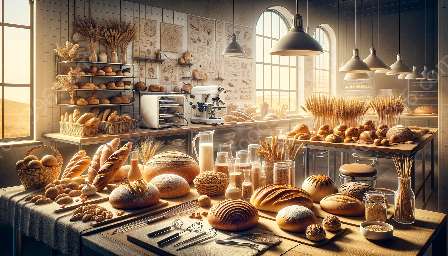The tortilla is a delightful form of bread that represents the perfect blend of tradition and technology, making it an indispensable item in cuisines around the world. From its humble beginnings to the various types that exist today, the tortilla reflects the ingenuity of baking science and the diverse characteristics of different bread types, underscoring its significance and versatility.
The History of Tortillas
Originating in Mesoamerica, tortillas have a rich history that dates back thousands of years. The indigenous people of the region utilized maize to create flatbreads, which were a staple in their diet. The process of nixtamalization, involving soaking maize in an alkaline solution, was developed to increase the nutritional value and make the dough easier to work with. This ancient method laid the foundation for the creation of the traditional corn tortilla, a technique that has stood the test of time and continues to influence the production of tortillas worldwide.
The Different Types of Tortillas
Tortillas come in various forms, each with its own unique characteristics and uses. Corn tortillas, made from masa harina or nixtamalized corn flour, have a distinct flavor and texture. They are a fundamental element in Mexican cuisine, serving as the base for dishes such as tacos, enchiladas, and quesadillas. Flour tortillas, on the other hand, are softer and more pliable, making them suitable for wrapping ingredients in burritos, fajitas, and other Tex-Mex favorites. In recent years, alternative tortillas made from ingredients such as spinach, kale, and chickpea flour have gained popularity, providing options for those with dietary restrictions or seeking innovative flavors.
The Role of Tortillas in the Bread Landscape
While tortillas have their own distinct characteristics, they are part of the larger spectrum of breads that encompass a wide array of shapes, flavors, and textures. As a flatbread, tortillas offer a versatile canvas for various fillings and toppings, bridging the divide between bread and other culinary elements. Their ability to adapt to different cuisines and cooking methods has made them a global phenomenon, integrating seamlessly into sandwiches, wraps, and even pizza crusts.
Baking Science and Technology Behind Tortillas
The creation of the perfect tortilla involves meticulous attention to baking science and technology. The choice of ingredients, such as the type of flour and the process of nixtamalization, directly affects the texture and flavor of the tortilla. The use of specialized equipment, such as tortilla presses and ovens, ensures uniformity and consistency in production. Furthermore, advancements in packaging and preservation methods have extended the shelf life of tortillas, allowing consumers to enjoy them fresh and flavorful for longer periods.
Conclusion
Tortillas stand as a testament to the enduring appeal of bread in all its forms, showcasing the harmonious blend of tradition and innovation. Their diverse types and characteristics offer a world of culinary possibilities, while the intricate science and technology behind their production ensure their quality and availability. From ancient origins to modern advancements, tortillas remain an essential component of global gastronomy, uniting people through the universal pleasure of breaking bread together.

